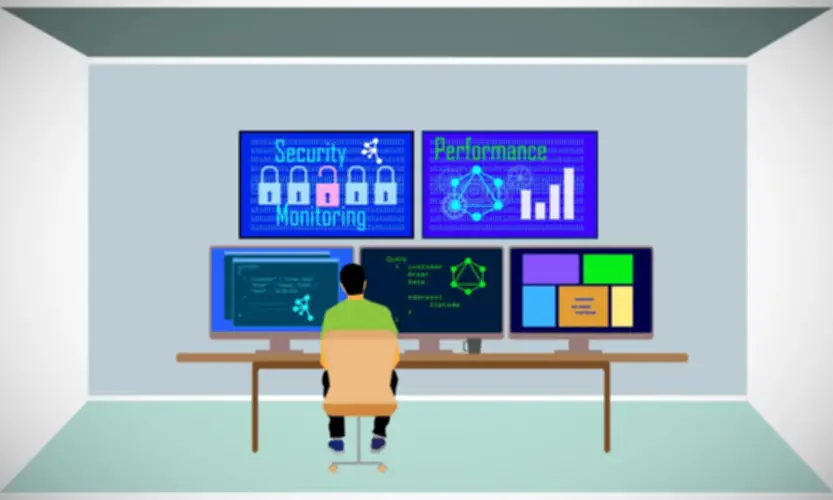What’s Cmmi? A Mannequin For Optimizing Development Processes
By investing in value determinations, organizations can unlock their full potential and build a basis for steady course of improvement. Companies with an integration-first mentality have a blueprint for automation and integration in place, managing more than Operational Intelligence 30 apps that assist the enterprise. Everyone in the firm is empowered, proactively enhancing their enterprise processes.
Assessment Questions And Maturity Indicators By Dimension
By focusing on clearly defined best practices and principles, CMMI empowers organizations to improve their effectivity, high quality, and general performance. This guide offers an in-depth take a look at CMMI, exploring its core rules, Maturity Levels, appraisal processes, and how it integrates with varied continuous delivery model industries and methodologies corresponding to Agile and Data Modeling. Capability maturity models (CMMs) are used to judge an organization’s capacity to perform a particular course of or exercise. CMMs sometimes define five ranges of maturity, from preliminary (lowest) to optimization (highest).
Levels Of Enterprise Integration
Domain scores and single scores may be in comparison with goal maturity scores for a corporation to indicate progress towards maturity objectives. However, maturity scores are not meant to be in contrast between organizations since every group is unique. Most companies are competing to find new methods to turn into data-driven, quick, and agile.
New Strategies For Contemporary Service Assurance
At this point, companies are working across departments to get much more defined with their enterprise processes, key Foundational SaaS apps have been implemented, and more and more SaaS apps are frequently adopted. However, at this level, the earlier ad-hoc and native integrations begin changing into an issue in themselves. Organizations at this degree set up primary project administration practices, which assist them obtain more predictable project outcomes. Standard processes are documented, and roles and duties are clearly outlined.
Understanding How Cmmi Is Utilized By Businesses
Maturity levels characterize a staged path for an organization’s efficiency and process enchancment efforts based on predefined sets of follow areas. Within each maturity level, the predefined set of PA’s also provide a path to efficiency improvement. Each maturity stage builds on the previous maturity ranges by adding new performance or rigor. High information maturity will lead to more informed selections, better enterprise outcomes, and competitive benefits out there.

Following variations of the CMMI became more summary and generalized, allowing it to be applied to hardware, software, and service improvement across each business. The CMMI was developed to mix a quantity of enterprise maturity models into one framework. CMMI Version 1.1 was released in 2002, followed by Version 1.2 in 2006, and Version 1.three in 2010; V1.3 was changed by V2.0 in March 2018. Organizations obtain larger course of maturity, regulatory compliance, and operational excellence by aligning industry-specific needs with the CMMI framework. Implementing CMMI (Capability Maturity Model Integration) within a company requires strategic planning, commitment, and adaptableness.
The methodology integrates nicely with Agile practices, making certain flexibility without compromising on process maturity. Whether enhancing data modeling, guaranteeing compliance, or enhancing product quality, CMMI provides a comprehensive set of tools and best practices to drive sustainable enhancements. Capability Maturity Model Integration (CMMI) is a process improvement methodology that provides organizations with a framework for enhancing their capacity to ship high quality products and services. It outlines key best practices, guiding organizations via structured levels of maturity, known as the “CMMI Maturity Levels,” to improve processes and obtain higher outcomes. CMMI is not only a set of tips however a sturdy system that helps assess, measure, and refine the organizational processes for continual development and excellence.
This is the stage that nearly all companies ought to be striving for to find the best stability. Many corporations at this stage have an iPaaS and have federated it for both IT and business users to construct and preserve the integrations that swimsuit their needs. With the assistance of an iPaaS, integration is seen as a strategic benefit to proactively get ahead and drive the enterprise ahead.
If your organization continues to be on the left side of the Integration Maturity Model, it’s worth contemplating the benefits of transferring toward the right. Having the right tools and digital infrastructure in place will assist your corporation accomplish its targets. An organization’s degree of SOA maturity can be assessed throughout the next set of dimensions that are important indicators for effective SOA adoption. In model 2.0 DEV, ACQ and SVC have been merged into a single model where every course of space doubtlessly has a selected reference to a quantity of of these three features. Trying to keep up with the industry the model additionally has explicit reference to agile features in some course of areas.
- Having offered integrations for thousands of corporations over the past decade, Celigo has identified certain integration trends based on a company’s improvement stage.
- Appraisal groups use a CMMI model and ARC-conformant appraisal methodology to guide their analysis of the organization and their reporting of conclusions.
- The group encourages experimentation, adopts best practices, and incorporates classes learned from earlier projects.
- The Capability Maturity Model Integration (CMMI)® is a confirmed set of world greatest practices that drives business performance through constructing and benchmarking key capabilities.
- This blog publish details what the mixing maturity mannequin is, the way it works, and the advantages an organization can convey to their integration initiatives.
In its simplest kind, these traits may have been defined prematurely, restricting the system to deciding on and finding specific instances of services. Every iteration of the CMMI aims to be easier for companies to understand and use than the final, and every mannequin is designed to be more cost-effective and easier to combine or deploy. It encourages companies to concentrate on quality over quantity by establishing benchmarks for vetting distributors and suppliers, identifying and resolving process issues, minimizing threat and constructing a company culture that will support the CMMI mannequin. In its first iteration as the Software CMM, the mannequin was tailor-made to software engineering.
Today, you’ll find a way to apply CMMI to hardware, software program, and service growth across all industries. The model permits organizations to measure, construct, and improve capabilities—to improve total efficiency. IT organizations that battle to fulfill the challenge of pervasive integration for digital enterprise transformation, should use Gartner’s maturity mannequin to evaluate the present standing of, and to improve, the group’s integration competency.
It’s worth noting that while the goal of organizations is to reach degree 5, the mannequin is still relevant and beneficial for organizations that have achieved this maturity degree. Organizations at this level are primarily centered on upkeep and improvements, they usually also have the pliability to concentrate on innovation and to reply to business adjustments. While CMMI was initially tailored in the path of software, the most recent model is much less particular.

Today, it stays a cornerstone for companies aiming to adopt finest practices in process administration and steady improvement. In summary, IMM can be used by businesses of any measurement to improve their integration processes. By understanding their present maturity stage and figuring out areas for improvement, companies can make the mandatory modifications to improve their integration capabilities and obtain enterprise targets. Assessment questions are correlated to maturity attributes for every maturity indicator by dimension. The maturity indicators are assessed towards a set of questions that elicit an organization’s present business and infrastructure-related service and SOA-related practices. The OSIMM base model features a set of evaluation questions and maturity indicators that can be used as provided or prolonged to determine an organizations service integration maturity.
Transform Your Business With AI Software Development Solutions https://www.globalcloudteam.com/ — be successful, be the first!